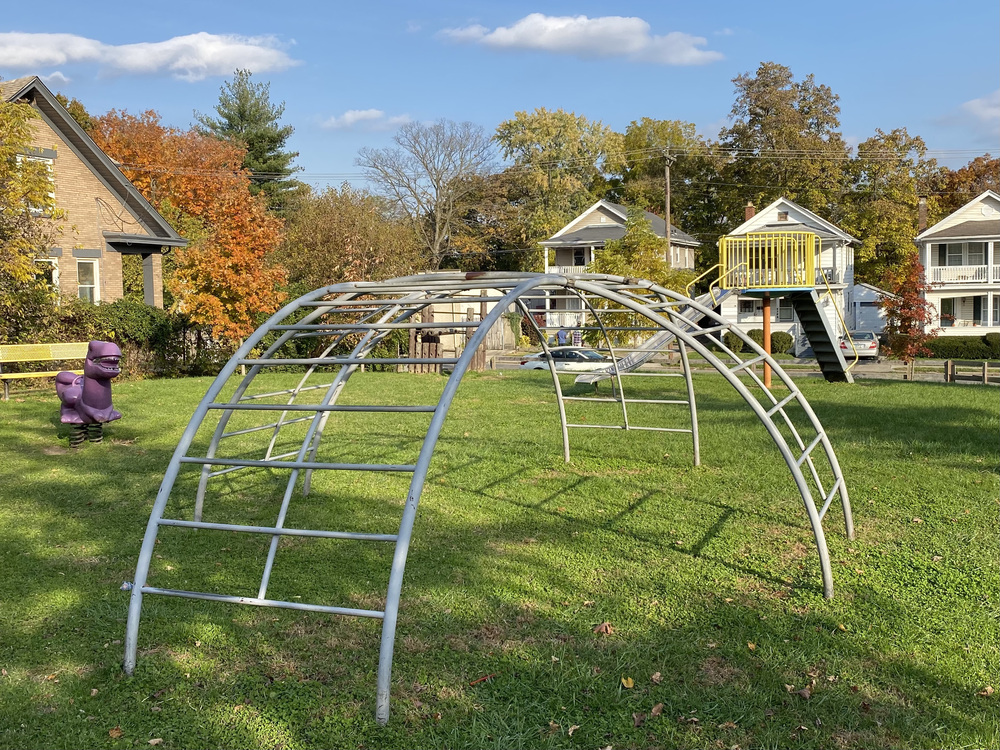Marsh Avenue Park
Site of racist attempts to drive African Americans from Norwood

In Norwood, there is a park called Marsh Avenue Park, which was created by the Norwood village council in 1922. Before it was a park, however, there were houses on this land. And one of those houses was inhabited by an African American woman named Miranda Boulden Parker.
Miranda Parker had previously lived in Ripley, Ohio, and she was the widow of a great Underground Railroad conductor named John P. Parker.
Here in Ohio, we are proud of Ohio’s historic role in the Underground Railroad. Sometimes, within the white community, a bit too proud. It was underground largely because Ohio was a border state where sympathy for slaveholding was widespread. Most white people favored the idea of some sort of “gradual end” to slavery but were vague about how that might be accomplished. The alternative to a “gradual end,” of course, would be immediate abolition, but many white people were convinced that sudden abolition would be a chaotic disaster.
So when we read the stories of Ohio’s great abolitionists and Underground Railroad conductors, it’s important to remember that many, perhaps most, ordinary white Ohioans thought that these people were dangerous fanatics. And those sentiments continued to reverberate long after the Civil War was over.
The Parker Family
John P. Parker was born into slavery in Virginia in 1827. After being sold to a doctor in Mobile, Alabama, Parker worked as an iron molder in a foundry. He eventually earned enough money to purchase his own freedom.
John P. Parker moved north and married Miranda Boulden. They settled in the river-town of Ripley, east of Cincinnati. Parker invented and patented several pieces of farm machinery, including a soil pulverizer and a tobacco press. Eventually he purchased a small foundry, where he manufactured farm equipment, sometimes from his own designs.
John P. Parker was also a fearless conductor on the Underground Railroad, guiding hundreds of men and women toward freedom. Unlike most other conductors, Parker was willing, almost nightly, to cross the Ohio River into Kentucky, to help bring fugitives out, at the risk of his own life. After the Civil War ended, Parker even wrote an autobiography, titled His Promised Land, which is probably the best account of American slavery ever written by someone who’d been there.
John P. Parker died in Ripley in 1900. A few years later, his widow Miranda decided to move to the Cincinnati area. Around 1907, she rented a home at 2644 Marsh Avenue in Norwood. She lived there with her grown daughters, Portia and Bianca, who were college-educated and made their living teaching music.
Some nearby white residents were not pleased by the presence of African Americans. At the Parker residence, windows and shutters were broken. Miranda Boulden Parker had the windows fixed, but they were broken again. She complained to local authorities. The health inspector arrived and told her that the broken windows were “health violations.” On the basis of these violations, the Parkers received an eviction notice in 1914. Bianca Parker went to the police, who were unhelpful, and then she appeared in court to fight the eviction, but the harassment continued.
Miranda Boulden Parker was the widow of one of the most brilliant and courageous heroes in American history. But she couldn’t beat Norwood. She and her daughters gave up and moved to Madisonville, a more integrated community, where Miranda Parker died in 1920. No one seems sure what happened to Portia and Bianca after that.
Marsh Avenue Park
In Norwood, even after the Parker family left, the house at 2644 Marsh Avenue was still occupied by African American tenants. Then rumors began swirling that several nearby lots had been sold to African Americans, and the white people of Norwood feared that a “negro colony” might be developing.
White residents of Marsh Avenue repeatedly petitioned Norwood City Council to keep this from happening. The Norwood city solicitor, however, stated that there was no legal way “to remove several negro tenants who already occupied one house on Marsh Avenue and that it was just as impossible to prevent other negroes from purchasing property there.”
Finally, the Norwood city council hit on an idea: they would appropriate the land, tear down several houses, and create a park. On September 6, 1922, the Cincinnati Enquirer ran an article headlined, “Park is Solution of Puzzle: Norwood to Purchase Land on Which Negro Colony Was Said to be Growing.” The article states:
“Action to appropriate property at Marsh and Beech Avenues, Norwood, for park purposes, was taken by Norwood City Council last night. … The purchase… remedies a situation that puzzled councilmen for many months. … The property includes the house in which the negroes live, and it is understood among the various property holders in the district that no more property will be sold to negroes.”
A number of African Americans protested to the Norwood council. Their protests are noted at the end of a follow-up article headlined, “Norwood Mayor Praised.” The house at 2644 Marsh Avenue was demolished.
And that is why there is a one-acre park in Norwood, called Marsh Park. There is no historic marker.
Here in Ohio, those of us who are part of the white community tend to think that in the story of the Underground Railroad, we’re the good guys. Sometimes we were. Sometimes we weren’t.
Images
